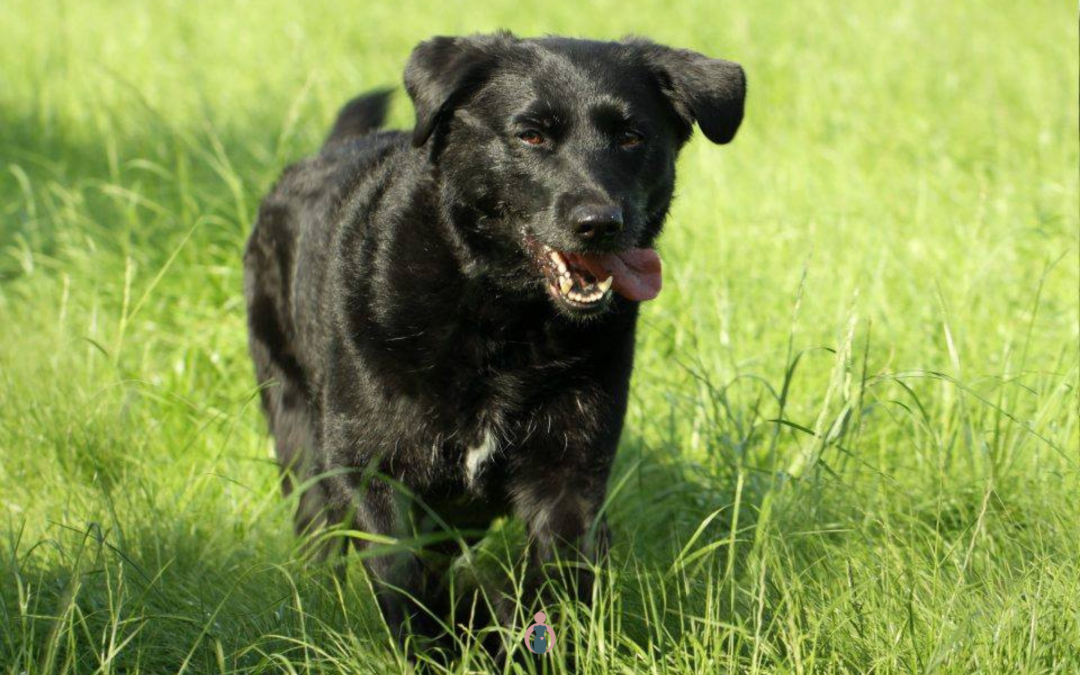Behavioral changes in senior dogs: recognition, explanation, and tips
It often seems to happen suddenly. Your older dog no longer wants to walk the usual route. Or he keeps standing when you ask him to sit. Maybe he responds more slowly to your voice, or seems to have suddenly forgotten cues he’s known for years. And then you might think: “Is he just becoming a bit stubborn in his old age?”
That thought is very understandable, and also very familiar to many people with an aging dog. But the truth is: behind that ‘stubbornness’ usually lies something else. In this blog, we’ll look at the real reasons behind changing behavior in older dogs — and how you, as an owner, can best deal with it.
What do we actually mean by ‘stubborn behavior’?
What many people experience as ‘stubborn’ is actually often a form of communication. Behavior that deviates from what we’re used to stands out. And if your dog used to walk along happily and now keeps stopping, it quickly seems like he simply no longer ‘wants to’. But what if he’s trying to tell you something? Think of behaviors like no longer wanting to sit on cue, wanting to go a different route during walks, responding more slowly to your voice or gestures, seeking new sleeping places, or no longer wanting to eat from the food bowl. These aren’t signs of stubbornness, but signals that indicate changing needs.
What changes in older dogs?
As dogs age, their bodies change in various ways. They become stiffer, their muscle strength decreases, and recovery after exertion takes longer. Sitting, for example, can become uncomfortable, causing them to hesitate or no longer perform the cue. Their senses also deteriorate: hearing diminishes, vision decreases, and sometimes even their sense of smell declines. A dog that can’t hear you, or doesn’t see clearly where you are, may respond more slowly as a result. And surfaces that were once comfortable to walk or lie on can suddenly feel too hard or slippery for sensitive joints.
Mental and emotional changes
Besides physical changes, we also see mental and emotional shifts. Older dogs often need more rest and predictability. Routines become more important, and unexpected changes can be stressful. This doesn’t mean your dog is anxious or insecure, just that he’s becoming less flexible. Just as in humans, processing stimuli in the brain can become slower in dogs too. Responding to cues takes more time, not because your dog is disobedient, but simply because he needs more time to process the information.
Emotionally, there’s often a lot of change as well. Busy environments, children, or other dogs can become overwhelming. A dog that previously enjoyed socializing now may not be as keen. That’s not sad or strange, but simply a sign that his needs are changing. The energy and enthusiasm of a young puppy may now be too much, while quiet, familiar environments provide more comfort.
Not stubbornness, but wisdom
There are beautiful examples of dogs displaying behavior that we might label as ‘stubborn’, but which actually contains a lot of wisdom. Like the older border collie that consistently chose the soft grass strip over the hard sidewalk during walks. Not because he was being difficult, but because he had some osteoarthritis in his feet and wrists. The soft surface simply felt better to walk on. That’s not stubbornness; that’s knowing what feels better at that moment. Your dog often knows very well what he needs. It’s up to us to notice and learn to listen to it.
You’re changing too — and that’s okay
It’s not just your dog that changes during this life stage. You do too. Many owners become more lenient as their dog ages. Things that ‘weren’t allowed’ before are now overlooked. And honestly? That’s logical. And beautiful. Perhaps you recognize this: your dog wants to go in a different direction during the walk, and you give in. Or he no longer eats from his bowl, but eats with relish from your hand. Then there’s nothing wrong with accommodating this, and even making a ritual out of it. A moment of quality time together. You place fewer demands, and create more space for comfort and connection. This is absolutely not spoiling – this is attuned care, love, and quality time together.
Indulgence is nice, but that doesn’t mean your dog needs to take over your household. Like with the lady who eventually ended up going outside with her dachshund eighteen times a day (and she lived on the the twelfth floor of her apartment building), just because he kept sitting by the door. The dog was physically fine and had no physical problem. He just really wanted to go and have his sniffs outside regularly… You can certainly set boundaries here: you don’t have to give in every time. It’s about balance. Moving with what your dog needs, but also taking good care of yourself.
Practical tips for dealing with ‘stubborn’ behavior
What can you do as an owner? First of all: observe without judgment. Look carefully at what’s changing. When does it happen? Is there a pattern? Behavioral changes can tell you a lot about how your dog is feeling.
Next, it’s important to adjust your expectations. What used to be effortless may no longer be possible. And that’s okay. Maybe you walk less long, or less far, but with more sniffing moments. Or maybe a cue like ‘sit’ is no longer used because it has become physically uncomfortable. You align with what’s realistic now.
Make things easier for your dog. Give simple cues, and allow him more thinking time. Use aids such as a step to the couch or extra rugs on slippery floors. If hearing diminishes, you can reintroduce hand gestures as visual cues. Many dogs respond very well to body language, even at an older age.
Also, feel free to let your dog make choices. He often knows very well what feels good to him. Maybe he now likes to lie in the hallway instead of the living room. Or maybe he consciously chooses a soft surface during walks. There’s often so much wisdom in those choices.
Keep doing fun things together
And don’t forget to keep doing fun things together. It’s a shame if favorite activities suddenly are no longer done. Just like humans, senior dogs also need to do things they enjoy. If physical limitations arise, see if an adapted form of a favorite sport or activity is still possible. A dog that loves tracking can often continue to do so for a long time, albeit with shorter distances or adapted tasks. This keeps your dog active, engaged, and happy.
Check for pain or discomfort
Finally, don’t forget to rule out physical causes. If your dog suddenly changes their behavior, it can also indicate pain or discomfort. If you are in doubt, it’s always a good idea to have your dog checked. There are many subtle signals that can indicate pain, and we don’t want to overlook those. I’ve written about this in an earlier blog post.
And perhaps the most important thing of all: be patient. And be kind. To your dog, but also to yourself. Aging can sometimes be difficult, but there’s also so much beauty in it. The deep bond, the gentle attunement, the quiet connection.
Behavioral changes in senior dogs are normal. It’s not disobedience, and usually not stubbornness either. It’s communication. Maybe your dog isn’t saying: “I don’t want to,” but: “I need something different.” And in that difference lies all the love in the world.
Do you recognize things about your own dog in this blog? Please feel free to share your experience via my social media or send me a message. I’d love to hear from you!


 Want to receive 5 tips for your senior dog in advance?
Want to receive 5 tips for your senior dog in advance?